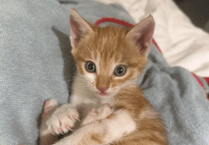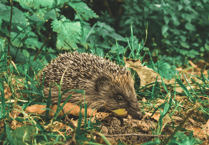The Isle of Man has a rich history of traditional folk music, dance and tales. Manx music officer Chloe Woolley takes a look at some of the stories that lie behind some of the best-known songs.
The Isle of Man has a rich hoard of fairy lore passed down to the present day through music and song.
’Fairies’ (also known as the Little People, Mooinjey Vegger or Ferrishyn) is the collective term for a multitude of fantastic creatures, many of which have been immortalised in song.
When the Victorian collectors such as A.W. Moore were saving the last remnants of Manx Gaelic song, the ’fairy belief’ was still very much alive.
The ’Song of the Fairies’ (Arrane ny Ferrishyn) in Moore’s Manx Ballads and Music (1896), mentions the Tarroo-ushtey, Glashtin, Phynodderree, Lhiannan Shee and Buggane, along with the Irish giant Finn McCoole.
Another song from the 1890s tells of the ghostly Glashtin, whose nightly roamings took him from Peel to Ramsey: ’Oie ayns Purt-ny-Hinshey, As oie ayns Balley-Rhumsaa. Fol, dee, doodle, hi...’
Half goat, half man, the Phynodderree (there are many different spellings) was the farmers’ best friend, as he could perform tasks requiring enormous strength.
For this, he was also known as yn foldyr gastey or ’the nimble mower’ as told in the traditional song: ’The Fenoderee went to the meadow alone, To lift the dew at the grey of the dawnâ?¦’
The Moddey Dhoo is brought to life through songs old and new.
One hundred years ago, the poet Cushag (Josephine Kermode) collected a children’s round about the Black Dog of Peel Castle and the legend has since inspired new songs, such as one by Lin Marsh (New Chronicles of Mann).
’The Lazy Wife’ in Sophia Morrison’s Manx Fairy Tales (1911) is linked to the traditional song, Snieu Wheeyl Snieu, where the wife has to guess the giant’s name.
This foawr (giant) also provides the theme for the Bunscoill Ghaelgagh’s forthcoming virtual musical, which will be broadcast on Manx Radio on July 19.
The beautiful singing of the Lhiannan Shee (also known as the ’Fairy Sweetheart’), was believed to cure illness and the legend of Hunt the Wren is linked to the beautiful witch Tehi Tegi who lured men to their deaths by drowning before she turned into a tiny wren and flew away.
On July 5, many people pin a sprig of bollan bane (mugwort) on their lapel for luck, unaware that Bollan Bane is also the name of an elusive tune reputedly collected from the fairies.
The sea-god Manannan first appears in literature in the 16th century ’Traditionary Ballad’, where he is named as ’the first King of Man’. His presence is evoked many times in songs such as Manannan Song and Manannan Beg Mac y Leirr.
In more recent times, the light-hearted song ’Hello Little People!’ features in the Manx National Songbook (volume 2), while Nigel Brown found inspiration in Manx fairy lore for the album ’Creepy Folk Come Down’, recorded under the name ’Scaanjoon’ and other songs.
A very popular tune with folk musicians is ’Car ny Ferrishyn’ or Fairy Dance.
This reel was originally penned in the 1800s by Nathaniel Gow, son of the famous Scots fiddler Niel Gow, but has since cropped up all over the world in various guises.
In the Isle of Man, it is also known as a dance and this month it is the subject of Pete Lumb’s guitar tutorial for Culture Vannin, which can be found at culturevannin.im
by Chloe Woolley
Manx music development officer
www.manxmusic.com





Comments
This article has no comments yet. Be the first to leave a comment.